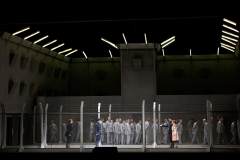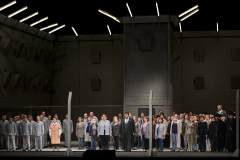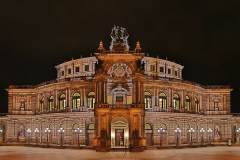Fidelio
Mo | Tu | We | Th | Fr | Sa | Su |
Fidelio
Opera in two acts by Ludwig van Beethoven
Libretto by Josef Sonnleithner, Stephan von Breuning und Georg Friedrich Treitschke
Performed in German with German and English supertitles
Premiere: October 7, 1989
Freedom! This production of Fidelio from 1989 is one pinnacle in the history of opera in Dresden.
Storyline
Leonore has assumed the name of Fidelio to penetrate into the prison where Florestan, her husband, is kept prisoner. She manages to be employed as a prison warder.
First scene
Marzelline, the daughter of Rocco, the prison master, refuses Jaquino's proposal of marriage. She loves Fidelio. By her betrothal to Marzelline, Leonore hopes to get Rocco's help for penetrating into the underground sections. Rocco on his turn hopes for relieving his conscience by making Fidelio an accessory. Pizarro, the governor, gets a warning that a surprising inspection is planned by the minister. He decides to put to death Florestan, his political adversary and only unlawful prisoner. He needs Rocco's help to execute this plan. Leonore asks Rocco to release the prisoners from the lighter prisons where she supposes her husband. Rocco gives permission to do so. — As Pizarro gets to hear about it, he orders all prisoners to be immediately locked again.
Second scene
After two years of solitary confinement, Florestan's resistance threatens to break down. Rocco and Leonore open the cistern which is planned to be the grave for the secret prisoner. Leonore is ready and willing to save the stranger. She recognizes him to be her husband. As Pizarro tries to eliminate his adversary, she prevents this murder. As the minister's arrival is announced, Pizarro has to welcome him. Leonore and Florestan are together again without knowing their fate. Don Fernando, the minister, orders all prisoners to be brought before him and issues a general amnesty. Rocco accuses Pizarro of attempted murder. Pizarro has to resign. The minister takes up the appeal made by the people in declaring it his original intention.
Program and cast
Florestan: David Butt Philip
Don Pizarro: Markus Marquardt
Leonore: Eleanor Lyons
Marzelline: Jasmin Delfs
Rocco: Georg Zeppenfeld
Jaquino: Mario Lerchenberger
Don Fernando: Neven Crnić
First Prisoner: Jörg Reißmann (October 3, 12, 26, 2024), Torsten Schäpan (October 9, 17, 2024)
Second Prisoner: Norbert Klesse (October 3, 12, 26, 2024), Holger Steinert (October 9, 17, 2024)
Musical Direction: David Afkham
Staging by: Christine Mielitz
Set & Costumes: Peter Heilein
Choir: Jan Hoffmann
Dramaturgy: Wolfgang Pieschel
Sächsischer Staatsopernchor Dresden
Sinfoniechor Dresden – Extrachor der Semperoper Dresden
Sächsische Staatskapelle Dresden
Semperoper Dresden
The Semperoper is the opera house of the Sächsische Staatsoper Dresden (Saxon State Opera) and the concert hall of the Sächsische Staatskapelle Dresden (Saxon State Orchestra). It is also home to the Semperoper ballet. The building is located near the Elbe River in the historic centre of Dresden, Germany.
The opera house was originally built by the architect Gottfried Semper in 1841. After a devastating fire in 1869, the opera house was rebuilt, partly again by Semper, and completed in 1878. The opera house has a long history of premieres, including major works by Richard Wagner and Richard Strauss.
The first opera house at the location of today's Semperoper was built by the architect Gottfried Semper. It opened on 13 April 1841 with an opera by Carl Maria von Weber. The building style itself is debated among many, as it has features that appear in three styles; Early Renaissance and Baroque, with Corinthian style pillars typical of Greek classical revival. Perhaps the most suitable label for this style would be eclecticism, where influences from many styles are used, a practice most common during this period. Nevertheless, the opera building, Semper's first, is regarded as one of the most beautiful European opera houses.

 EN
EN DE
DE IT
IT FR
FR ES
ES RU
RU JP
JP RO
RO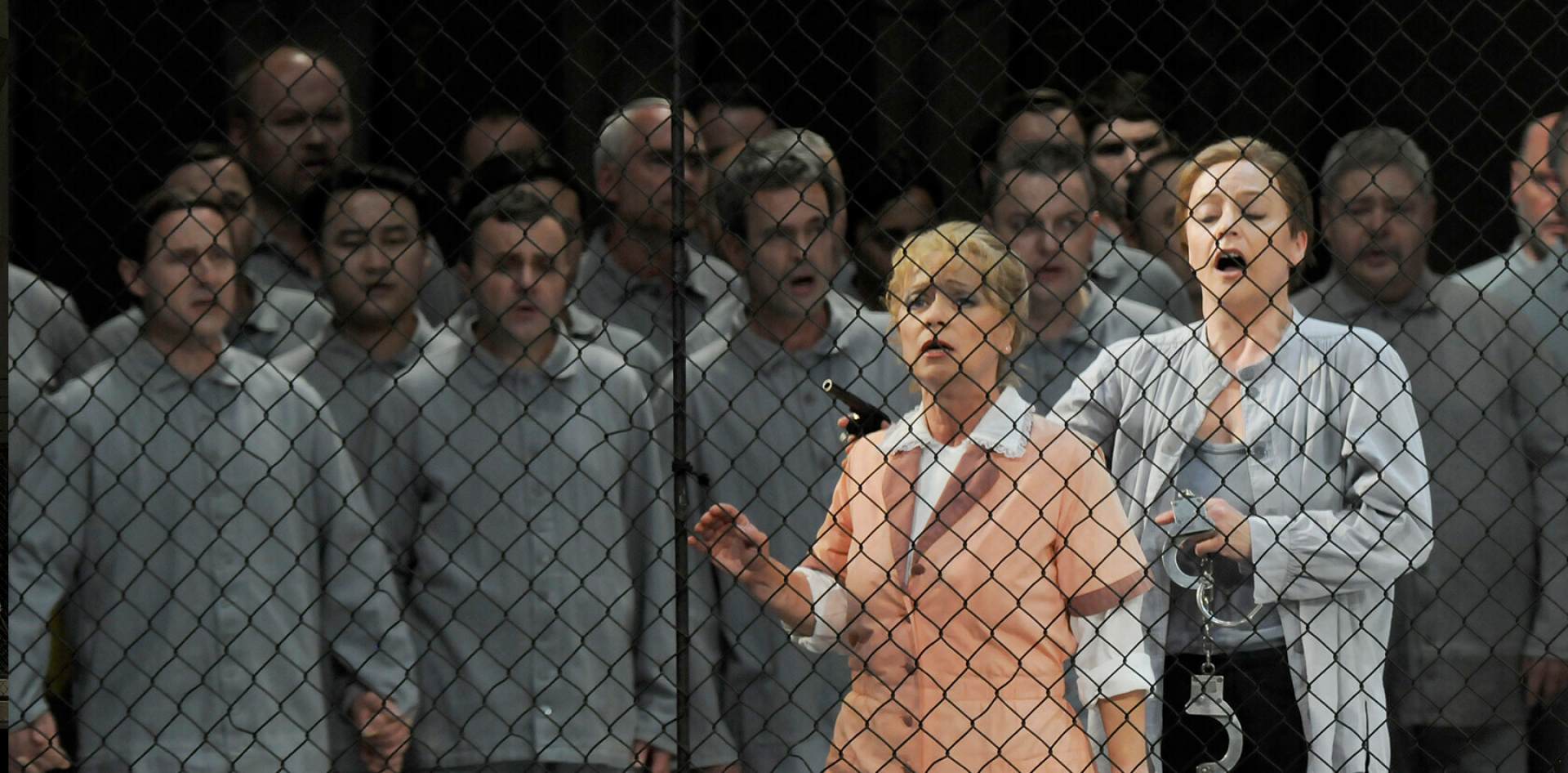
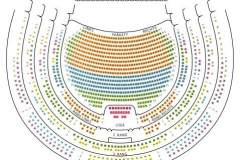 Seating plan
Seating plan 
